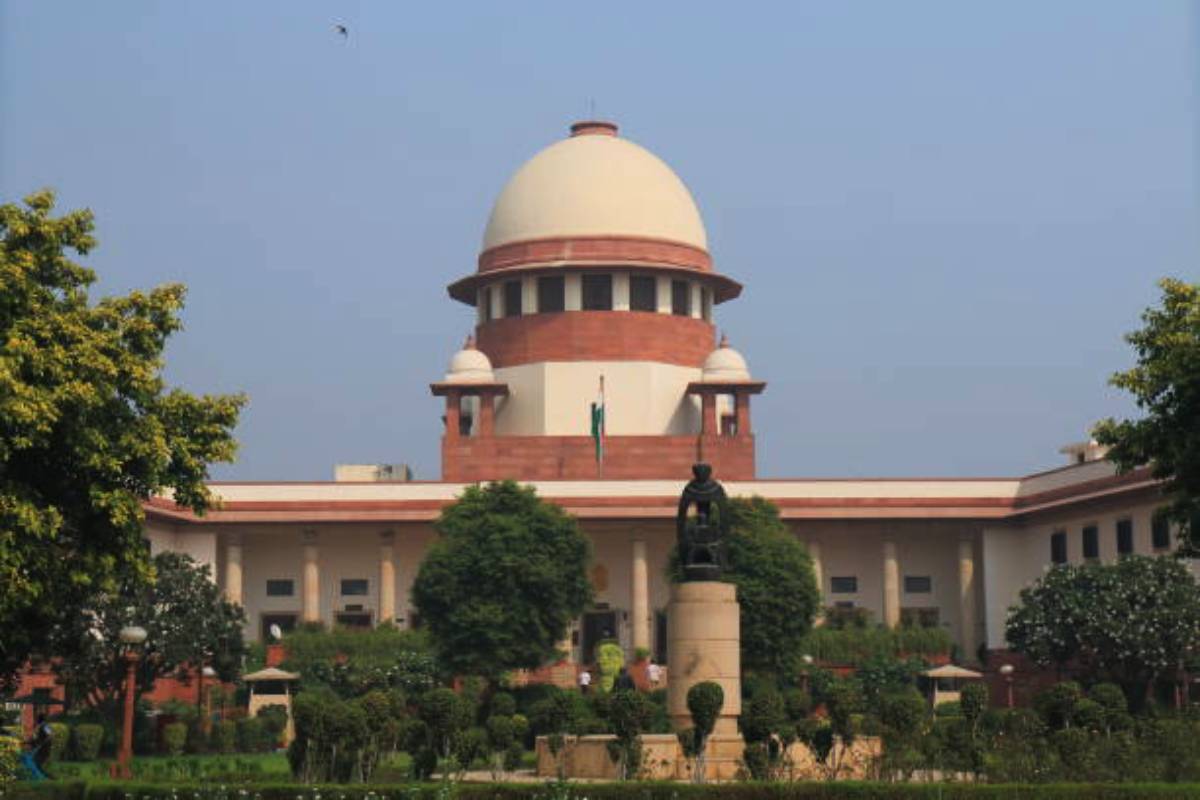SC collegium approves 5 advocates as judges in Calcutta HC
The Supreme Court collegium has approved the names of five advocates for appointment as judges in the Calcutta High Court.
The top court also rejected the prayers of petitioners to return to ballot paper voting system, calling it foible and unsound.

Representational Photo
The Supreme court on Friday rejected the plea of the NGO, Association for Democratic Reforms (ADR), and others seeking 100 per cent cross verification of EVM votes with VVPAT slips.
The court directed the completion of the symbol loading process in the VVPATs undertaken on or after March 1, 2024. The symbol loading units shall be sealed and secured in a container and the same shall be kept in the strong rooms along with the EVMs at least for 45 days after the declaration of results.
Advertisement
Finding no infirmity in the conduct of polling using the EVMs, a bench of Justice Sanjiv Khanna and Justice Dipankar Datta asked the Election Commission of India (ECI) to examine the suggestion for using counting machine for the counting the VVPAT paper slips and whether along with the symbol there could be a bar code for each party.
Advertisement
“During the course of hearing, it was suggested that instead of physically counting the VVPAT slips, they can be counted by a counting machine. This suggestion, including the suggestion that barcoding of the symbols loaded in the VVPATs may be helpful in machine counting, may be examined by the ECI,” the judgment asked the poll panel to loo0k into these two aspects.
Holding that the possibility to “hack or tamper with the agnostic firmware in the burnt memory to tutor/favour results is unfounded” the court said that “the suspicion that the EVMs can be configured/manipulated for repeated or wrong recording of vote(s) to favour a particular candidate should be rejected”.
Acknowledging the right of voters to question the working of EVMs, which are but an electronic device that has a direct impact on election results, Justice Khanna authoring the judgment, in a note of caution said, “However, it is also necessary to exercise care and caution when we raise aspersions on the integrity of the electoral process. Repeated and persistent doubts and despair, even without supporting evidence, can have the contrarian impact of creating distrust. This can reduce citizen participation and confidence in elections, essential for a healthy and robust democracy.”
Rejecting the plea for return to the ballot paper voting system, Justice Khanna speaking for the bench said, “We must reject as foible and unsound the submission to return to the ballot paper system. The weakness of the ballot paper system is well known and documented. In the Indian context, keeping in view the vast size of the Indian electorate of nearly 97 crore, the number of candidates who contest the elections, the number of polling booths where voting is held, and the problems faced with ballot papers, we would be undoing the electoral reforms by directing reintroduction of the ballot papers.”
Having rejected the prayer for return to the ballot paper system, the court said, “EVMs offer significant advantages. They have effectively eliminated booth capturing by restricting the rate of vote casting to 4 votes per minute, thereby prolonging the time needed and thus check insertion of bogus votes. EVMs have eliminated invalid votes, which were a major issue with paper ballots and had often sparked disputes during the counting process. Furthermore, EVMs reduce paper usage and alleviate logistical challenges. Finally, they provide administrative convenience by expediting the counting process and minimising errors.”
Concurring with Justice Khanna, Justice Datta giving additional points said that “blindly distrusting any aspect of the system can breed unwarranted scepticism and impede progress. Instead, a critical yet constructive approach, guided by evidence and reason, should be followed to make room for meaningful improvements and to ensure the system’s credibility and effectiveness.”
Stating that the approach should be guided by evidence and reason to allow space for meaningful improvements, Justice Datta said, “By nurturing a culture of trust and collaboration, we can strengthen the foundations of our democracy and ensure that the voices and choices of all citizens are valued and respected. With each pillar fortified, our democracy stands robust and resilient.”
Of the two-directions issued today to the poll panel, the court said that on completion of the symbol loading process in the VVPATs undertaken on or after May 1, 2024, the symbol loading units shall be sealed and secured in a container. The candidates or their representatives shall sign the seal.
The sealed containers, containing the symbol loading units (SLU), the court said shall be kept in the strong room along with the EVMs at least for 45 days after the declaration of results.
The SLUs shall be opened, examined and dealt with as in the case of EVMs.
In its second direction to the poll panel, the court said that upon the declaration of result, the losing candidates at position number two and three, after the winning candidate, can seek verification of votes and such a request can be made within 7 days of the declaration of results.
In pursuance to this request, 5% of the EVMs, – the Control Unit, Ballot Unit and the VVPAT, per assembly segment of a Parliamentary constituency will be checked and verified by a team of engineers from the manufacturers of the EVM. The candidate will have to bear the cost of the entire exercise, if upon verification it is found that EVMs are not tampered with. However, in a reverse situation, if EVMs are found to be tampered, the amount will be refunded to him.
Advertisement